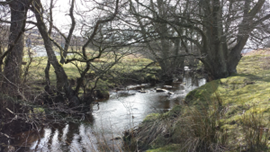UNESCO World Heritage Status tentative list
The new Tentative List, the UK government’s latest attempt to add to UNESCO’s list of world heritage sites, now has seven sites from across the UK and Overseas Territories. Most, if not all of them, will never make it to UNESCO’s list, but the government, local authorities and devolved administrations will now work hard to develop their bids.
‘Site’ in the phrase ‘world heritage site’ is defined rather broadly, as the UK’s tentative seven show. The first two on the list are distinct places. ‘Birkenhead the People’s Park’ as the list describes it, is the pioneering municipal park. It opened in 1847, across the River Mersey from Liverpool, which no longer has a world heritage site. Next comes York, which the government announcement breathlessly tells us has ‘fantastic civic and religious buildings including its Minster as well as a rich history left behind by its Anglo-Saxon, Viking and Norman inhabitants’.
‘The Zenith of Iron Age Shetland’ is a collection of three ancient settlements, one on the island of Mousa, the other two on the Shetland mainland, all three including the remains of round towers known as brochs. The proposed site of ‘Gracehill Moravian Church Settlement in Northern Ireland’ is part of a joint bid alongside other Moravian religious sites in Denmark, the USA and Germany, celebrating that religious community.
The other three ‘sites’ on the tentative list are what are classified as ‘natural’ rather than ‘cultural’. ‘East Atlantic Flyway: England East Coast Wetlands’ is not so much a place as a migratory bird route over western parts of Europe, including parts of Yorkshire, Lincolnshire, Norfolk, Suffolk, Essex and Kent. ‘The Flow Country’ is a vast expanse of blanket bog (a rare type of peatland) in the north of Scotland. Apparently it is more fun than it sounds. According to the Flow Country website, you can become a volunteer, staying ‘for a few weeks or a few months – some folk end up staying for years’.
Finally, the ‘Little Cayman Marine Parks and Protected Areas’, situated in the UK Overseas Territory of the Cayman Islands, have been put forward, not for their contribution to dodgy banking, but for ‘their exceptional importance to marine biodiversity and their incredible natural beauty’.
The ancient world, keeping it simple, celebrated Seven Wonders. UNESCO has more than 1,000 on its list of ‘sites of outstanding universal value’. The task of selecting even that number from what must surely be potentially tens of thousands of places of such value is inevitably often the cause of furious debate. UNESCO defines outstanding universal value as ‘cultural and/or natural significance which is so exceptional as to transcend national boundaries and to be of common importance for present and future generations of all humanity’.
Those of us who have not been landed with the almost impossible job of applying that definition can enjoy the fruits of the process that highlights some of the very best of what the world has to offer.
The article is an extract from the Context Journal and appears on the IHBC news and blog site as "New Context out, on World Heritage Sites, designation, Armageddon and even more" dated July 03, 2023.
--Institute of Historic Building Conservation
[edit] Related articles of Designing Buildings
- World heritage site.
- Conservation area.
- Conservation in the heritage cities of Venice and Liverpool.
- Delisting Liverpool world heritage site.
- Designated areas.
- Edinburgh world heritage site valued at over 1 billion.
- Heritage definition.
- International heritage policy.
- Landscapes of human exploitation.
- Listed building.
- Outstanding universal value.
- Saltaire.
- Scheduled monuments.
- Site of Nature Conservation Interest (SNCI).
- Sites of special scientific interest SSSI.
- Special areas of conservation.
- Special protection areas.
- Stonehenge tunnel.
- Urban Heritage, Development and Sustainability.
[edit] External links
IHBC NewsBlog
Notre-Dame Cathedral of Paris reopening: 7-8 December
The reopening is in time for Christmas 2025.
Stirling Prize-winning Salford building to be demolished
The Centenary Building will be bulldozed as part of the wider £2.5bn Crescent regeneration project
Volunteers work to transform 100-year-old ‘hidden’ building into bothy
The building, named Druimnashallag, is located southeast of Oban.
The new ‘Arches for HERs’ Demo site, from the Getty Conservation Institute via HE
It shows how organisations responsible for historic environment records (HER) management can benefit from its powerful features.
ICOMOS-CIF 2024 Symposium celebrates 40th anniversary in Venice
It aims to critically review current practices and theories of conservation of built heritage around the world, and more.
HES establishes new national centre for retrofit of traditional buildings
HES plans to develop the centre follows £1m of funding from UKRI Arts and Humanities Research Council.
High Court rejects oral appeal against tower block decision in historic Bloomsbury
The request was for a full Judicial Review hearing against Camden Council’s approval of a 74m-high tower block in Bloomsbury.
Mayor of London and Government announce bold plans to transform Oxford Street
Plans include turning the road into a traffic-free pedestrianised avenue, creating a beautiful public space.
Crystal Palace Subway, for 160th anniversary
The remarkable Grade II* listed Crystal Palace Subway in South London begins a new era following major restoration.
National Trust brings nature back to an area twice the size of Manchester in less than a decade
The National Trust has achieved its aim of creating or restoring 25,000 hectares of priority habitat on its land by 2025.
















